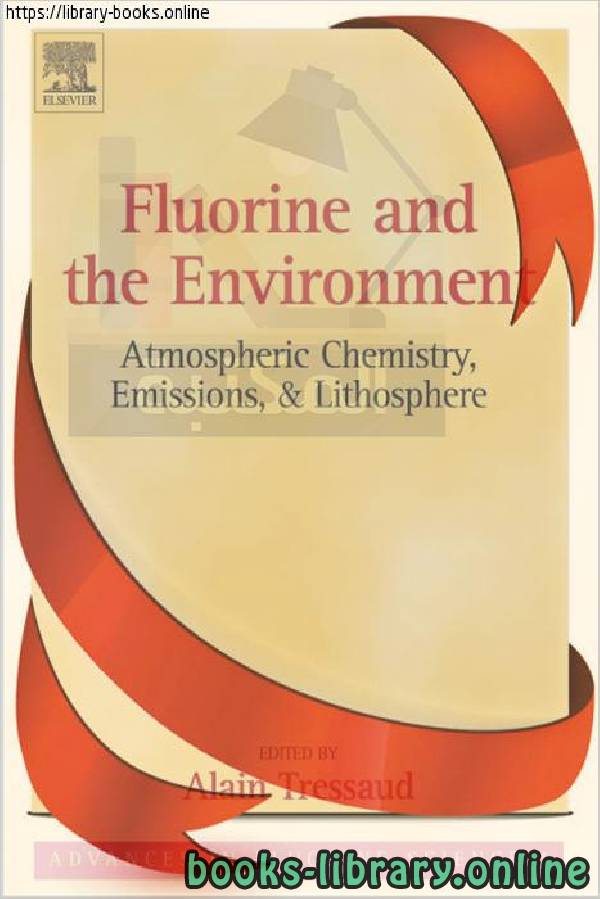📘 قراءة كتاب Advances in Fluorine Science - Fluorine and the Environment_ Atmospheric Chemistry, Emissions, & Lithosphere أونلاين


Biologically
Biology is a natural science that is concerned with the study of life, its various forms and its function, how these organisms interact with each other and with the surrounding environment. The word biology in Greek is made up of two words: bio (βίος) meaning life. And loggia (-λογία) means science or study. Biology: the similarity of vegetation and animal cover on the edges of the African and American states, and the existence of the same fossil.
Branches of biology
Biology is an ancient science thousands of years old and modern biology began in the nineteenth century. This science has multiple branches. Among them are:
Anatomy
Botany
Biochemia
Biogeography
Biofisia
Cytology or cell science
Ecology or environmental science
نبذه عن الكتاب:
Fluorides and fluorine chemistry have important impact on many aspects of
modern life. Most are aware of Teflon coatings in cooking utensils, the impact of
chlorofluorocarbons on the ozone layer, the beneficial influence of fluoride on
dental caries, and the utility of substituting F for H in making pharmaceuticals
such as fluorouracil. But generally there is less awareness of the impact, real or
potential, that fluorine chemistry can have on improving our environment, saving
energy via new synthetic approaches, making more potent and longer-lasting
batteries, and improving nuclear-reactor technology. These are some of the issues to be addressed in this series of volumes.
Apart from the proton, the fluorine atom binds to more elements than any other
atom. This is because the chemical bonds that the F-ligand makes with other
atoms are intrinsically strong. The small size and closed-shell electron configuration of the bound fluorine ligand account for these properties. Indeed, the
close proximity and mutual repulsion of the valence electrons in the small F2
molecule cause it to be weakly bound. This (contrasting with the strong double
bond in O2) gives fluorides a high thermodynamic stability, relative to oxides. In
addition, the high effective nuclear charge and smallness of bound F, make it the
most electronegative of ligands. So, we find that except for helium and neon,
fluorine is known to bind to all of the elements. Moreover, fluorine often excites
the highest oxidation state attainable in an element. Only in cases where the
univalence of the F-ligand demands high coordination (and strong ligand–ligand
repulsion) does oxygen surpass fluorine in that respect (as in the nonexistence of
the octafluorides of xenon or osmium, contrasting with the known tetroxides of
those elements)
Biology
Human biology
Who is the founder of biology?
The importance of biology
Areas of work in the field of biology
Theories of biology
Research on biology for the first grade of secondary school
Human biology
سنة النشر : 2006م / 1427هـ .
حجم الكتاب عند التحميل : 3.63 .
نوع الكتاب : pdf.
عداد القراءة:
اذا اعجبك الكتاب فضلاً اضغط على أعجبني و يمكنك تحميله من هنا:

شكرًا لمساهمتكم
شكراً لمساهمتكم معنا في الإرتقاء بمستوى المكتبة ، يمكنكم االتبليغ عن اخطاء او سوء اختيار للكتب وتصنيفها ومحتواها ، أو كتاب يُمنع نشره ، او محمي بحقوق طبع ونشر ، فضلاً قم بالتبليغ عن الكتاب المُخالف:
 قبل تحميل الكتاب ..
قبل تحميل الكتاب ..
يجب ان يتوفر لديكم برنامج تشغيل وقراءة ملفات pdf
يمكن تحميلة من هنا 'http://get.adobe.com/reader/'


 منصّة المكتبة
منصّة المكتبة 